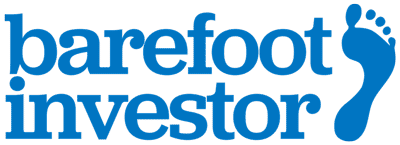Would you invest in ... whisky?
I often write about investments that sound too good to be true.There’s a reason for this: people continually ask me about investments that sound too good to be true.
So this week, just for kicks, I thought I’d revisit a couple of stories … a sort of financial catastrophe version of ‘Where Are They Now?’
Secret Property Options
In March I wrote about a ‘land banking’ scheme that once operated down the road from my family farm.
Busloads of mums and dads would do field trips to a farm on the outskirts of Melbourne that the developers had named ‘Secret Valley’. They’d wander around the paddocks sizing up what they were told was a canny deal.
The pitch was simple: Secret Valley is on the edge of the Melbourne sprawl. Eventually it will be swallowed up by suburbia. And if you’re smart enough to buy an option on a few plots of land from the promoters … you could become very, very rich.
How rich?
The marketing pitch to the people on the bus was that they could turn $120,000 into $1.2 million.
So what happened to the investors in the scheme?
Well, as I concluded at the time,“The investors in Secret Valley got roughly the same treatment that my ewes receive when I put a few daddy rams into the paddock.”
So what happened to the promoters of the scheme?
Well, this week they accepted 10-year bans from managing a corporation or operating a financial services business. They also agreed to pay ASIC’s legal costs of $50,000. However, they do not have to reimburse their investors -- who have likely lost millions.
Depressing? Too bloody right.
So let’s get on the grog.
Nant Whisky Barrels
Tasmania’s Nant whisky is a damn fine drop -- it’s been referred to as ‘liquid gold’ and it’s won gongs at the World Spirits Awards. But it was Nant’s ‘investment opportunity’, which I wrote about earlier this year, that really gave me a hangover.
Nant offered investors the opportunity to buy two barrels of their single-malt whisky for $25,000. Then they ‘guaranteed’ that in four years’ time they’d buy back the barrels for $36,007 (precisely). That worked out to be a 9.55 per cent per annum compounded return, which Nant plastered on their newspaper ads.
The entrepreneur behind Nant (and therefore behind the guarantee) was a property developer by the name of Keith Batt. (Well, he was a property developer until he went bankrupt owing $16 million.)
Two things happened after I published the story on Nant.
First, Nant investors came out of the cellar claiming that they were struggling to get Nant to buy back their barrels as promised.
Second, I kept tabs on Batt, figuring he’d eventually pull the pin.
That happened this week.
Nant’s assets are in the process of being sold to an outfit called Australian Whisky Holdings (AWH). This publicly listed private equity group has strategic holdings in other Tasmanian distilleries, and they’re apparently long-term investors in what is an exceptionally well-regarded world-class product -- Tasmanian whisky.
I called up a director of AWH, Chris Malcolm, and asked him whether the company will honour Nant’s guarantee to buy back existing investors’ barrels and deliver them a 9.55 per cent compound return.
Malcolm: “We cannot commit to anything until we have undertaken a full audit.”
Barefoot: “Why not?”
Malcolm: “Mr Batt has indicated there may be a … hole.”
Barefoot: “And just how big is this hole, Mr Malcolm?”Malcolm: “We do not know how big the hole is.”
Yet there was another Nant investment scheme that I wanted to ask Mr Malcolm about: cows.
Yes, cows.
See, after the barrels blew up, Nant came out with another opportunity for investors: the chance to buy a dozen purebred Black Angus breeding cows for $30,000.
Cowabunga!
And, just like with the whisky barrels, investors are lured by a guarantee. Nant will purchase the cows back in five years’ time for $47,335 (precisely) which delivers investors ... the exact same 9.55% compound return. Whisky? Cows? At least they’re consistent.
Unfortunately, there have been media reports of investors having a hard time tracking down the precise location of their cows -- and basically getting the same old beef jerky from Nant that the barrel owners are getting.
Mr Malcolm just laughed: “I can confirm that we are not ... haw, haw, haw … buying the cow business.”
And then his phone cut out.
Smelling the Bulldust
On the face of it, you couldn’t think of a more diverse set of investments: whisky, farmland, and cows. (Come to think of it, I’ve pretty much just described my father’s dream retirement.)
Yet while they’re all very different investments, they have four things in common:
First, their advertising made bold claims about their potential financial returns.
Second, they targeted mums and dads to invest via their Self Managed Super Funds (SMSFs).
Hold up for a second.
Anyone reading these ads would believe they were investing in a financial product, right? Especially given they were putting their superannuation nest eggs into these schemes.
Wrong.
That’s the third thing all these investments have in common. The promoters denied they were offering a financial product. And there’s a very good reason for this. If they were, they’d have to issue a Product Disclosure Statement (PDS) and be regulated by ASIC. They’d also have to apply for an Australian Financial Services licence, for which, among other things, you need to pass a good character test.
And the final thing they all had in common? They all sounded too good to be true.
Tread Your Own Path!
